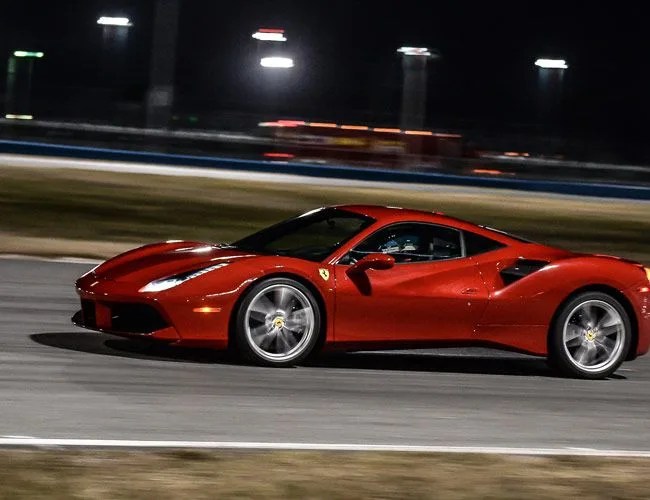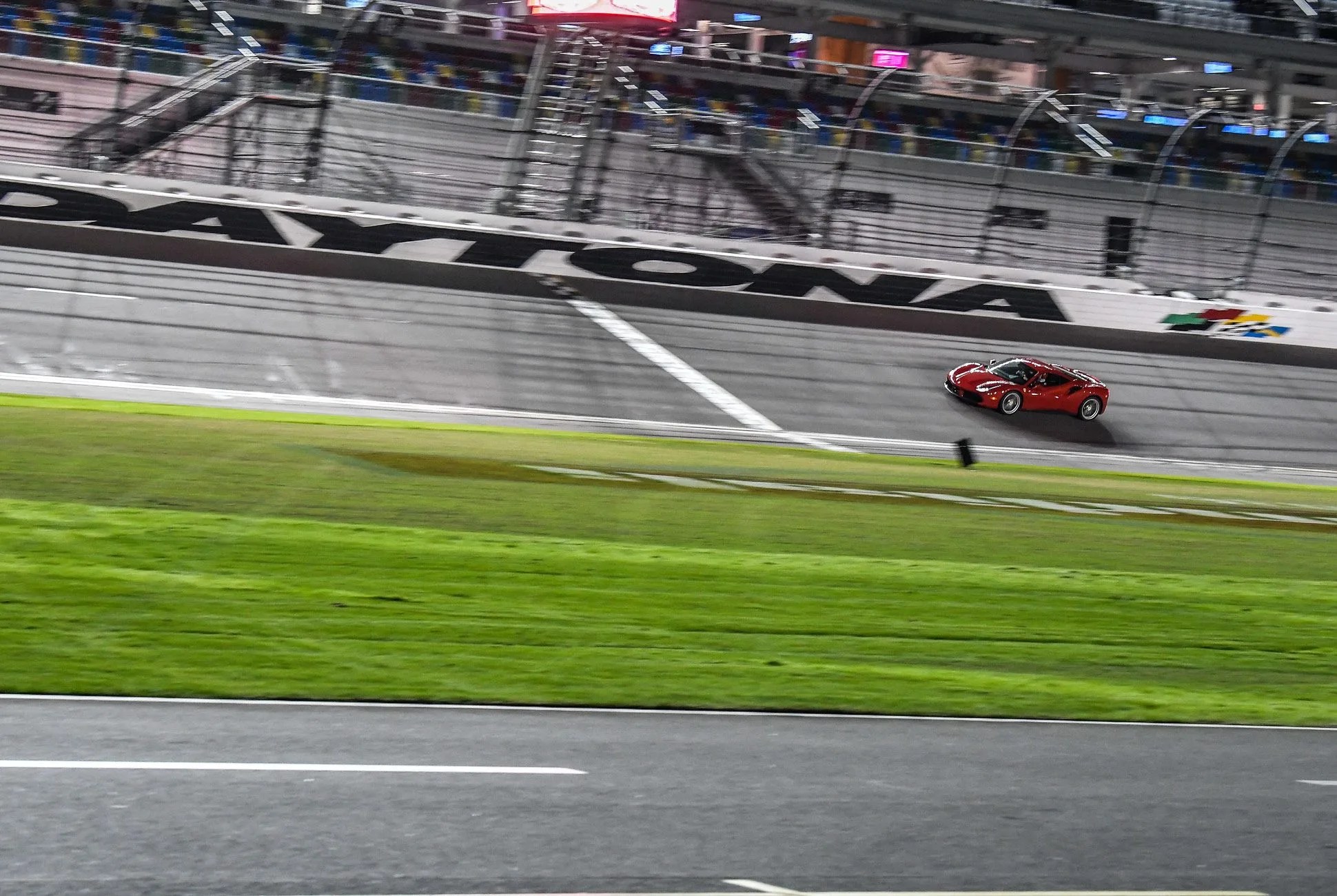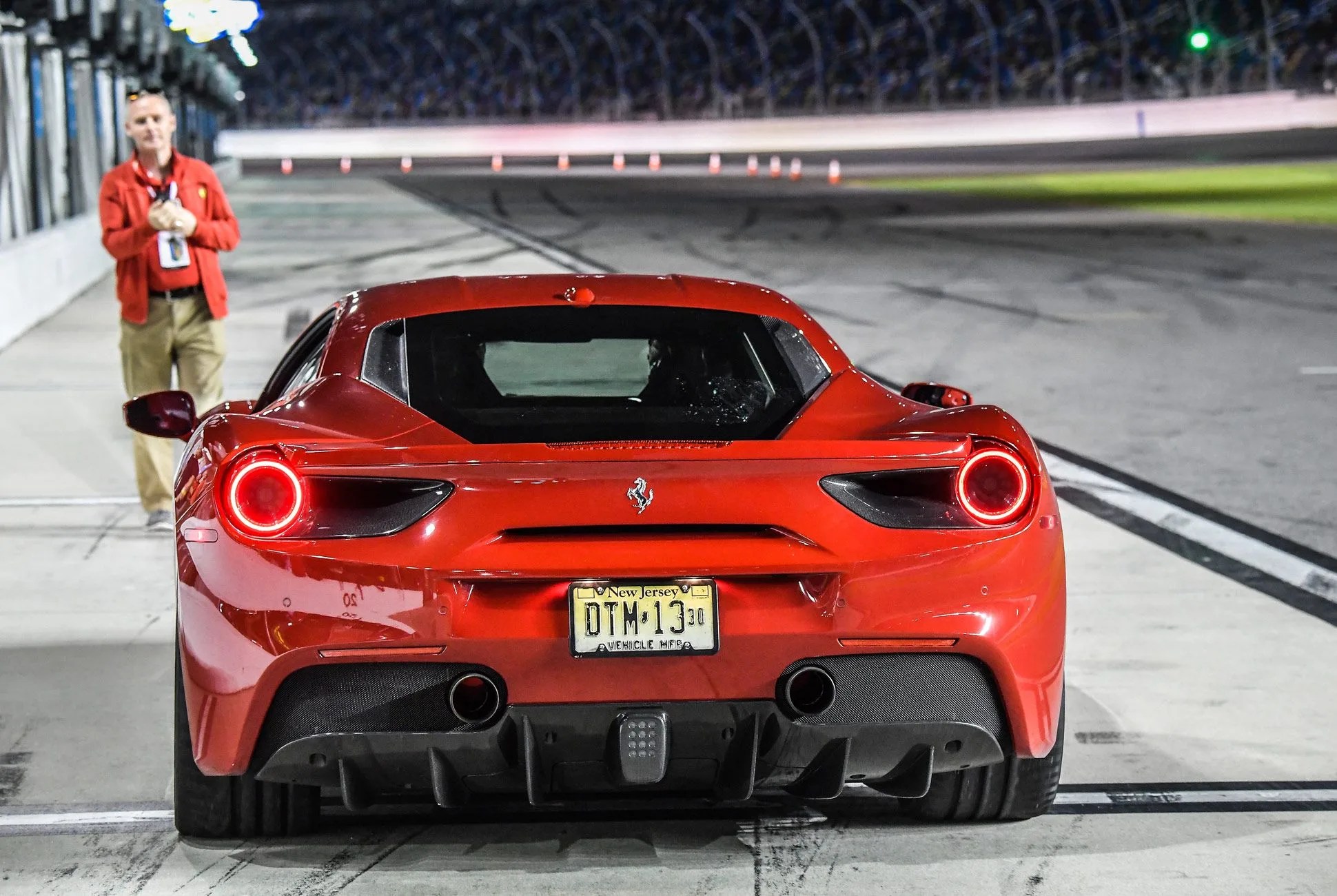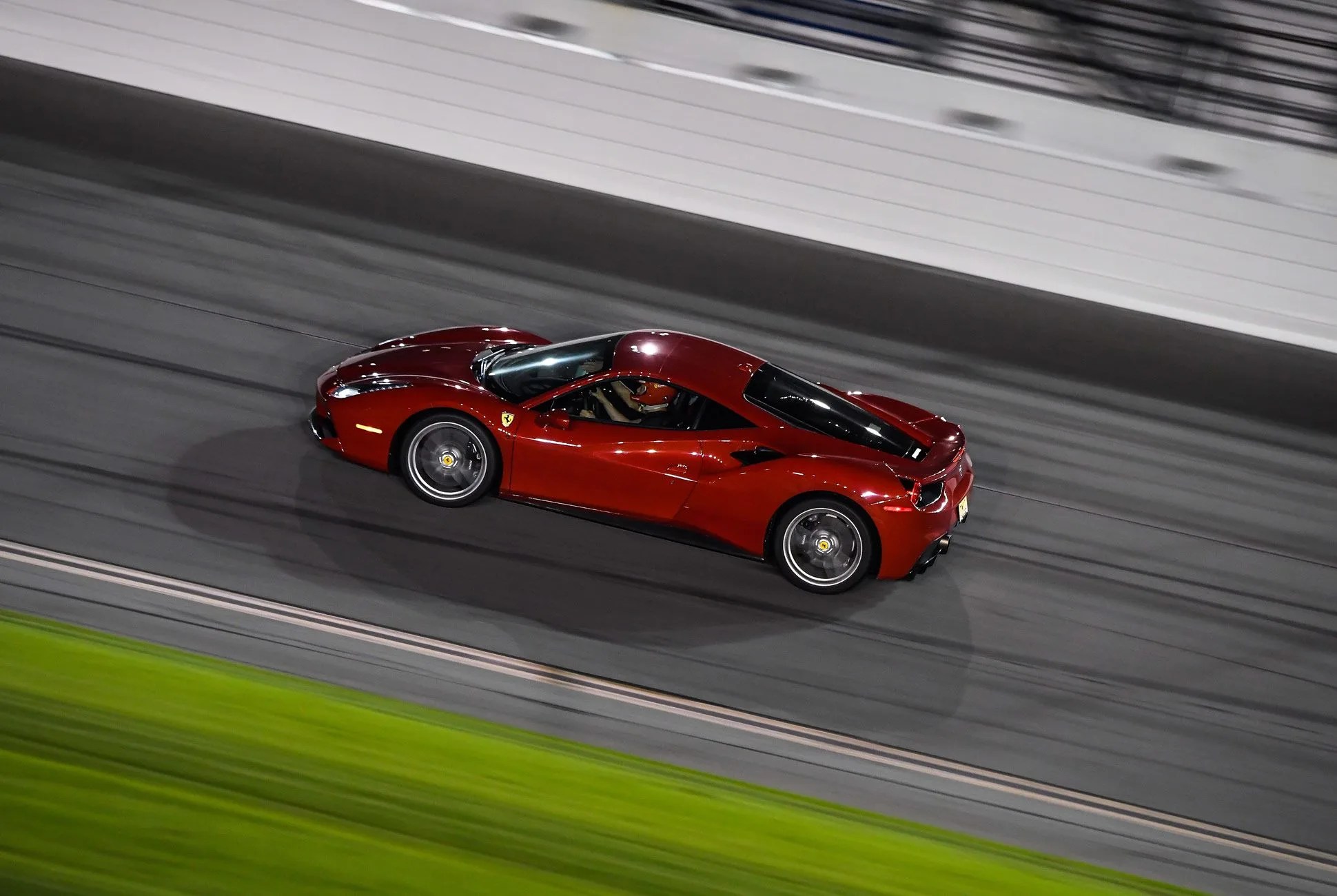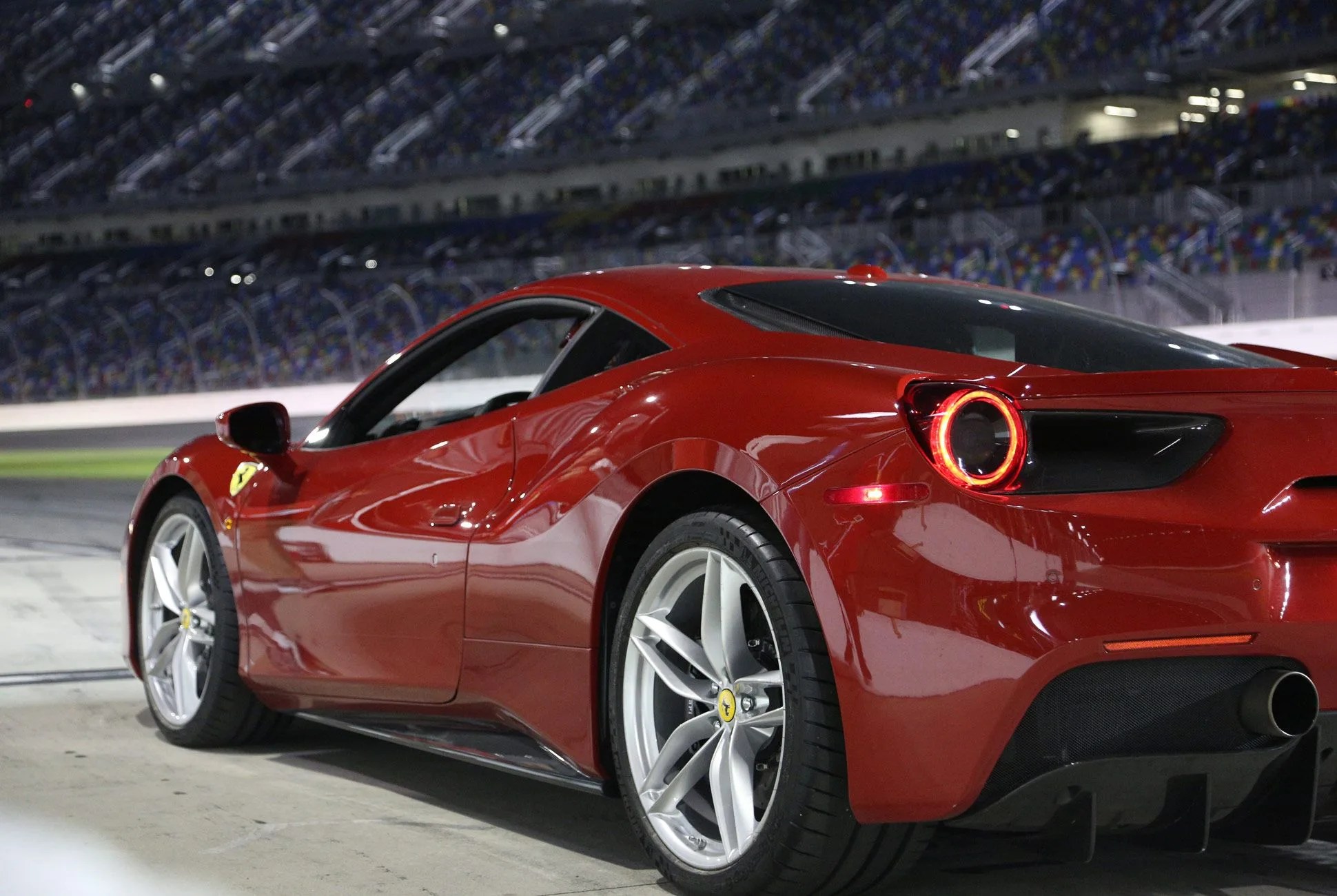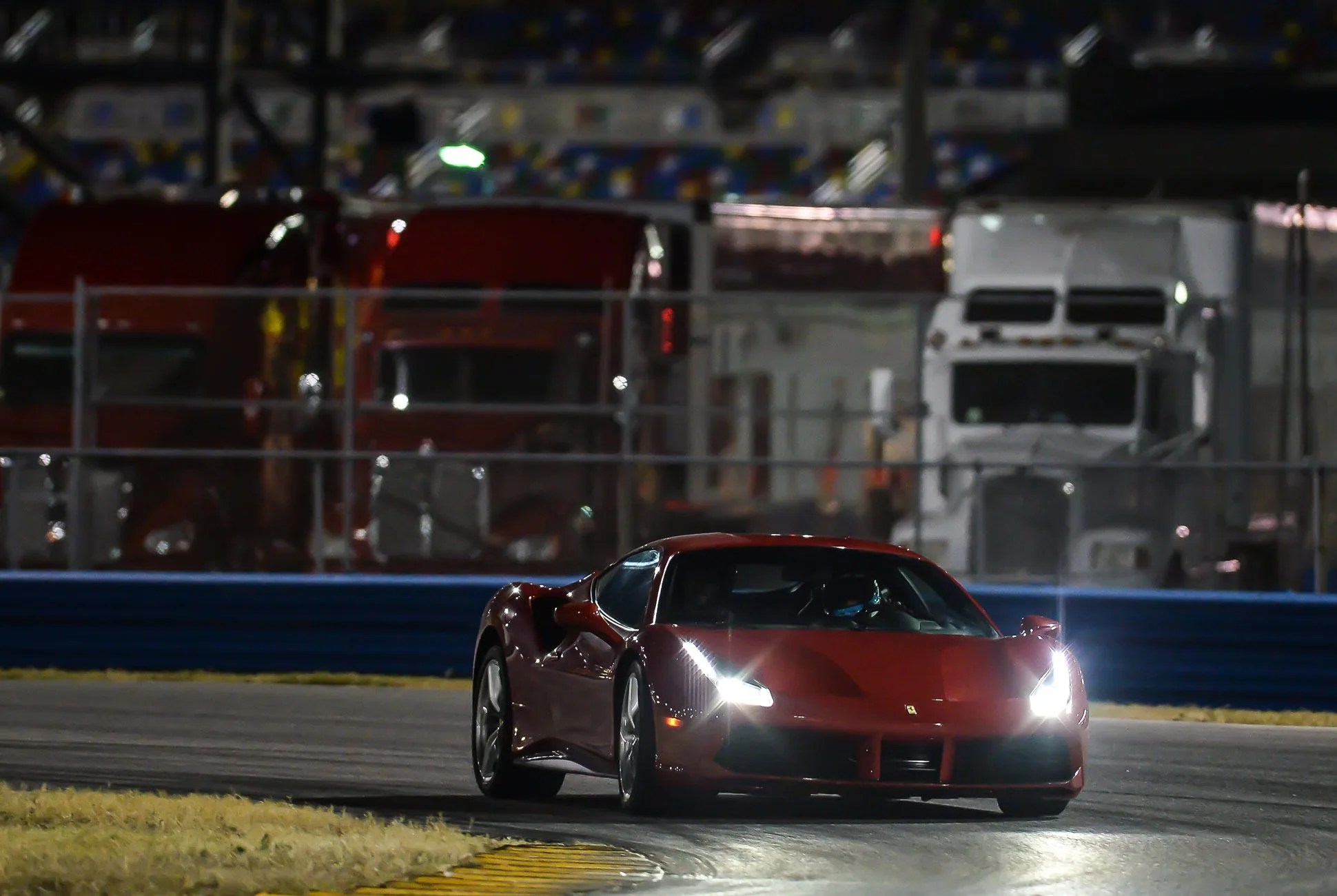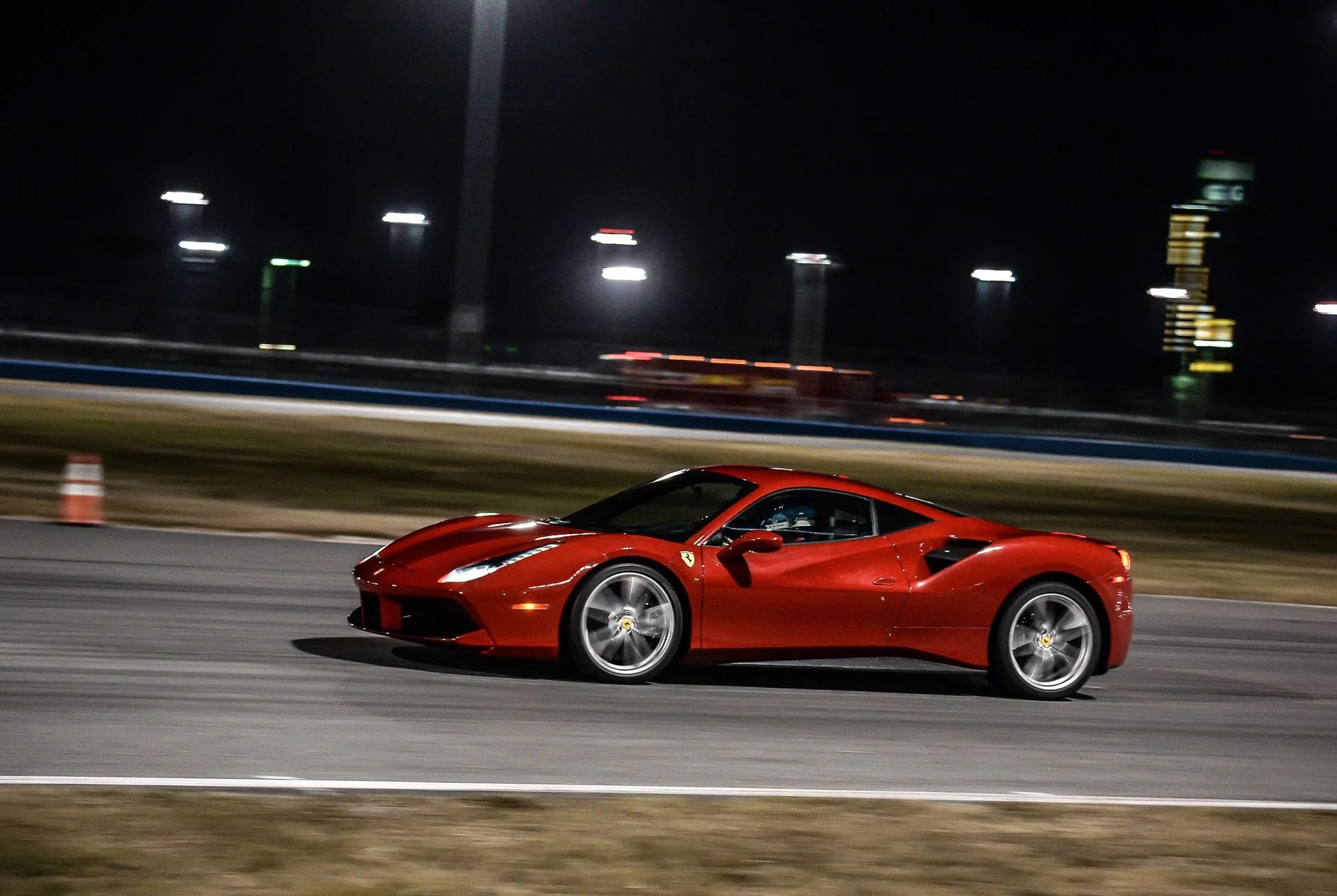7 photos
Official Ferrari test driver Raffaele De Simone turned to me and, muffled by a full-face race helmet, said, “We must heat the tires and the brakes, so we do not crash.” He stated this casually, as if every time he gets in a car he puts on his seat belt, checks his mirrors and roasts the tires. He laid into the throttle and we set out to do a warm-up lap around Daytona International Speedway in the 488 GTB, at night, no less.
Navigating the pit exit, which is barely wide enough for the 488, to the road course, De Simone pointed at the once all-white concrete barrier, now zebra-striped with tire marks, and offered another helpful tip: “Be careful here, it’s easy to crash — you can see. No good.” Out on the track, De Simone picked up the driving and speaking pace as I tried to process his calling out brake markers and turn-in points for the first couple of turns on Daytona’s Road Course.
2016 Ferrari 488 GTB
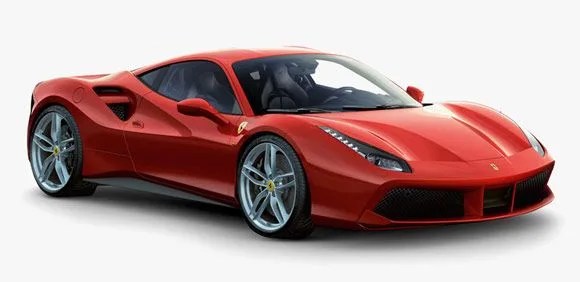
Engine: 3.9–liter twin-turbo V8
Transmission: seven-speed Dual-Clutch
Horsepower: 661
Torque: 561 lb-ft
0-60 mph: 3.0 seconds
MSRP: $249,1500
Leaving the last left-hander of the infield section, De Simone pinned the throttle and hauled us towards the tidal wave of asphalt commonly known as “NASCAR Turn One.” The entire earth seemed to rotate around the car and, just as the force of Daytona’s famously intimidating banked turns started to settle in, I could feel the g-forces pulling the blood from my face towards my feet. De Simone was feathering the throttle at 150 mph. You know, just to warm up the tires.
